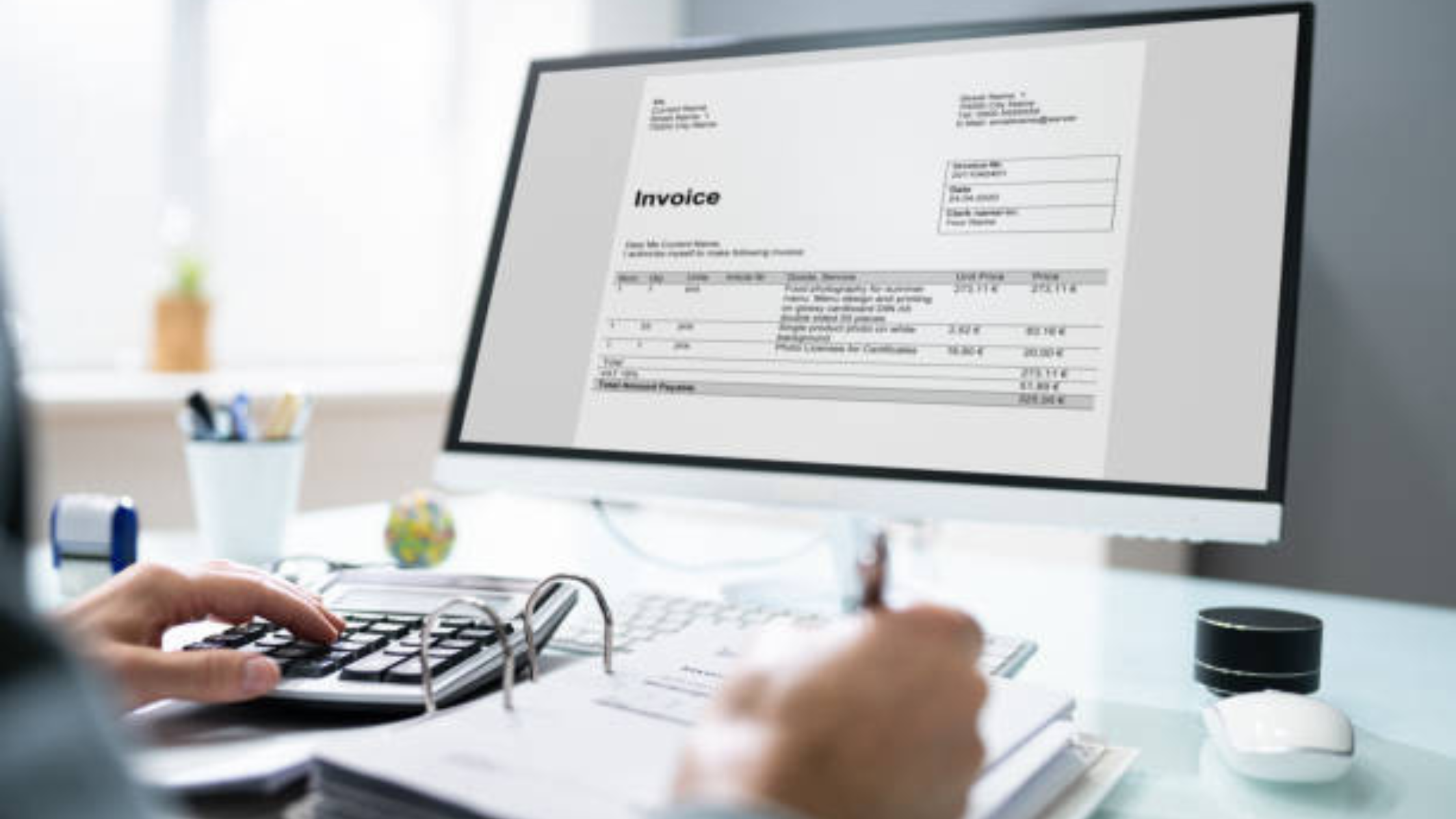Efficiently Manage Salary Receipts for Your Employees

Efficient Salary Receipt Management.
Efficiently managing salary receipts for employees is crucial for any organization's financial operations. Ensuring accurate and timely distribution of salaries not only boosts employee morale but also maintains compliance with labor laws. This process involves meticulous record-keeping, payroll processing, and adherence to tax regulations. By implementing efficient salary receipt management practices, businesses can streamline their payroll operations, reduce errors, and enhance overall financial transparency. In this digital age, leveraging payroll software and automated systems can significantly simplify the salary receipt management process, saving time and resources. Additionally, providing employees with detailed and easily accessible salary receipts fosters trust and transparency within the organization. This introduction will explore key strategies and tools to help businesses effectively manage salary receipts for their employees, ultimately contributing to a more efficient and compliant payroll system.
Managing Salary Receipts Efficiently
Managing salary receipts efficiently is essential for the smooth functioning of any organization. In this blog section, we will explore the various benefits that come with implementing an effective system for handling salary receipts.
Ensures Transparency and Compliance
- Efficient salary receipt management promotes transparency within the organization.
- Ensures compliance with legal and regulatory standards.
- Avoids legal issues and penalties.
- Builds trust among employees.
Helps in Tracking Financial Records Accurately
- Enables organizations to track financial records with precision.
- Crucial for budgeting, forecasting, and making informed business decisions.
- Analyze expenses effectively.
- Identify areas for cost-saving.
Saves Time and Reduces Errors
- Automating the salary receipt management process saves valuable time for HR and finance teams.
- Eliminates manual data entry and paperwork.
- Reduces the risk of errors.
- Ensures accurate and prompt salary payments.
Enhances Employee Satisfaction
- Contributes to employee satisfaction by ensuring timely and accurate payment processing.
- Boosts morale and creates a positive perception of the organization.
- Leads to higher employee retention rates and increased productivity.
Facilitates Auditing and Reporting
- Simplifies the auditing process and facilitates accurate reporting.
- Well-maintained salary records streamline the verification process.
- Ensures compliance with auditing standards.
- Provides valuable insights for financial analysis and strategic planning.
Efficient salary receipt management offers a wide array of benefits, including transparency, compliance, time savings, error reduction, employee satisfaction, and improved auditing processes. By investing in a robust system for managing salary receipts, organizations can optimize their financial operations and enhance overall efficiency.
How to Generate Salary Receipts Effectively
Leveraging Automated Payroll Systems for Efficiency
Leveraging automated payroll systems is essential for generating salary receipts effectively. These systems streamline the payroll process by automating calculations and generating accurate receipts promptly. By inputting employee details, salary components, and deductions into the system, organizations can ensure error-free and professional-looking receipts in a fraction of the time it would take manually.
Inclusion of Comprehensive Details in the Receipts
Creating comprehensive salary receipts is crucial for fostering transparency and understanding among employees. Along with basic information like the employee's name and designation, it is vital to include details such as the pay period, gross salary, itemized deductions (e.g., taxes, insurance, retirement contributions), net salary, and any pertinent remarks. By providing a breakdown of how the salary is computed, employees gain insight into their earnings and deductions, promoting trust and clarity.
Safeguarding Confidentiality and Data Security
Protecting the confidentiality and security of payroll information is paramount in the payroll process. Employers must implement robust measures to prevent unauthorized access and data breaches. Utilizing secure payroll systems equipped with access controls, encryption protocols, and regular data backups can fortify the protection of sensitive employee data. Additionally, restricting access to authorized personnel and conducting periodic security audits can further enhance data security.
Embracing Technology for Enhanced Payroll Management
Beyond generating salary receipts, organizations can leverage technology to enhance overall payroll management. Integrating payroll systems with time tracking software, HR management platforms, and accounting tools can streamline processes, improve accuracy, and facilitate compliance with regulations. Moreover, embracing cloud-based solutions offers scalability, accessibility, and real-time data insights, empowering organizations to adapt to evolving payroll needs efficiently.
Ensuring Compliance with Legal Regulations
Compliance with legal regulations is a critical aspect of generating salary receipts effectively. Organizations must stay updated on labor laws, tax regulations, and reporting requirements to ensure that the salary receipts are accurate and compliant. Failure to adhere to legal standards can result in penalties, fines, and damage to the organization's reputation. By establishing a robust compliance framework and conducting regular audits, organizations can mitigate risks and maintain integrity in their payroll processes.
Enhancing Employee Communication and Engagement
Effective communication with employees regarding salary receipts is essential for building trust and engagement. Organizations should provide avenues for employees to seek clarification on their receipts, address any discrepancies promptly, and offer financial literacy resources to enhance their understanding of payroll components. By fostering open communication and transparency, organizations can strengthen the employer-employee relationship and promote a positive work culture.
Mastering the art of generating salary receipts effectively requires a multifaceted approach that encompasses technological innovation, attention to detail, data security, legal compliance, and employee engagement. By implementing best practices in payroll management and continuously improving processes, organizations can streamline operations, enhance transparency, and build a harmonious workplace environment.
Tools for Generating Salary Receipts
Software Options for Generating Salary Receipts
When it comes to generating salary receipts, businesses have a plethora of software options available in the market. Among the top choices are QuickBooks, ADP, Gusto, and Paychex. These tools offer a range of features tailored to meet various business requirements.
QuickBooks
QuickBooks stands out as a versatile accounting software that also provides a robust solution for generating salary receipts. With QuickBooks, users can not only create customized receipt templates but also efficiently track payments and seamlessly integrate salary data with other financial records.
ADP
ADP, known for its comprehensive payroll services, includes a sophisticated feature for generating detailed salary receipts. Its automation capabilities, compliance tools, and secure data storage ensure that businesses can generate receipts accurately and efficiently.
Gusto
Gusto is another popular choice for small to medium-sized businesses. Apart from payroll services, Gusto offers a user-friendly interface for creating professional salary receipts. It simplifies the process while maintaining accuracy and compliance.
Paychex
Paychex caters to businesses of all sizes and provides a reliable solution for salary receipt generation. Its intuitive platform allows for easy customization of receipts and seamless integration with payroll systems.
Highlighted Features to Look for
When selecting a tool for generating salary receipts, it is essential to consider the following key features:.
Customization Options: Opt for software that enables customization of receipt templates to align with your company's branding and style.
Automation Capabilities: Look for tools that offer automation features to streamline the receipt generation process and minimize errors.
Integration with Payroll Systems: Choose a tool that integrates seamlessly with your existing payroll system to ensure accurate salary calculations and data consistency.
Compliance Tools: Ensure that the software complies with relevant tax laws and regulations to avoid legal complications and penalties.
By evaluating these features and exploring software options like QuickBooks, ADP, Gusto, and Paychex, businesses can identify the most suitable tool for generating salary receipts efficiently and accurately. Investing in the right software can enhance productivity, reduce manual effort, and ensure compliance with financial regulations.
Best Practices for Salary Receipt Management
Regularly Update and Review Salary Receipts
It is crucial for organizations to regularly update and review salary receipts to ensure accuracy and compliance. By staying on top of this process, discrepancies or errors can be identified and rectified promptly. Regular reviews also help in tracking any changes or updates in salary structures, tax deductions, or other relevant information. This practice not only enhances transparency but also aids in maintaining a clear record of financial transactions.
Train Employees on How to Access and Understand Their Receipts
Employee training plays a vital role in effective salary receipt management. Providing clear instructions on how employees can access and understand their receipts can help streamline the process and reduce confusion or errors. Additionally, educating employees on the importance of reviewing their receipts can empower them to spot any discrepancies and report them promptly. This proactive approach fosters a culture of accountability and accuracy within the organization.
Maintain Backups of All Receipts
To safeguard against data loss or potential issues, it is recommended to maintain backups of all salary receipts. Whether in physical or digital form, having duplicates ensures that important information is not lost and can be retrieved when needed. Implementing a secure backup system, whether through cloud storage or physical filing, adds an extra layer of protection to sensitive financial data. Regularly test the backup systems to ensure they are functioning correctly and that all receipts are being successfully stored.
Implement Automation for Receipt Management
Incorporating automation tools for receipt management can significantly streamline the process and reduce manual errors. Utilizing software that automatically generates and organizes digital receipts can save time and resources for both employees and the finance department. Automation also minimizes the risk of human error and ensures that all receipts are accurately recorded and stored in a centralized system.
Conduct Periodic Audits and Reviews
Periodic audits of salary receipts and the overall management process are essential to identify any inefficiencies or areas for improvement. Conducting regular reviews allows organizations to assess the effectiveness of their current practices, address any compliance issues, and implement necessary changes. Audits also serve as a preventive measure against fraud or unauthorized access to sensitive financial information.
Stay Updated on Legal and Regulatory Changes
Staying informed about changes in tax laws, labor regulations, and other legal requirements is crucial for effective salary receipt management. Organizations must stay proactive in updating their processes and systems to align with the latest legal standards. Failure to comply with regulatory changes can result in penalties or legal consequences, highlighting the importance of staying abreast of industry updates and implementing necessary adjustments.
Foster Communication and Transparency
Open communication between employees, the finance department, and management is key to successful salary receipt management. Encouraging employees to raise any concerns or questions regarding their receipts promotes transparency and trust within the organization. Establishing clear channels for feedback and addressing any issues promptly fosters a collaborative environment focused on accuracy and compliance.
Invest in Employee Well-being and Satisfaction
Recognizing the impact of salary receipt management on employee satisfaction and well-being is essential for organizational success. Ensuring that employees receive their receipts accurately and on time contributes to their overall job satisfaction and trust in the organization. Investing in tools and resources that facilitate easy access to receipts and financial information can enhance employee experience and engagement.
Continuously Improve Processes and Systems
Continuous improvement is key to optimizing salary receipt management practices. Regularly solicit feedback from employees and stakeholders to identify areas for enhancement and implement innovative solutions. By fostering a culture of continuous learning and adaptation, organizations can adapt to changing needs and technologies, ensuring efficient and effective salary receipt management in the long run.
Conclusion
Effectively managing salary receipts for employees is crucial for maintaining transparency, compliance, and employee satisfaction within an organization. By implementing streamlined processes, utilizing digital tools, and ensuring timely distribution of receipts, businesses can not only enhance their operational efficiency but also foster trust and accountability among their workforce. Prioritizing the management of salary receipts is a fundamental aspect of human resource management that should not be overlooked.







